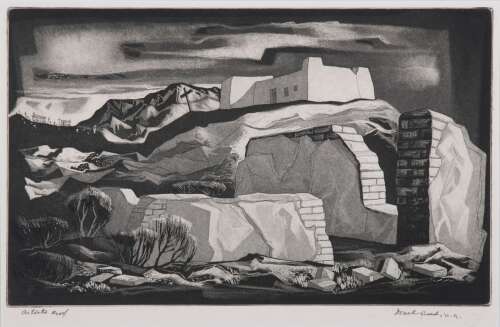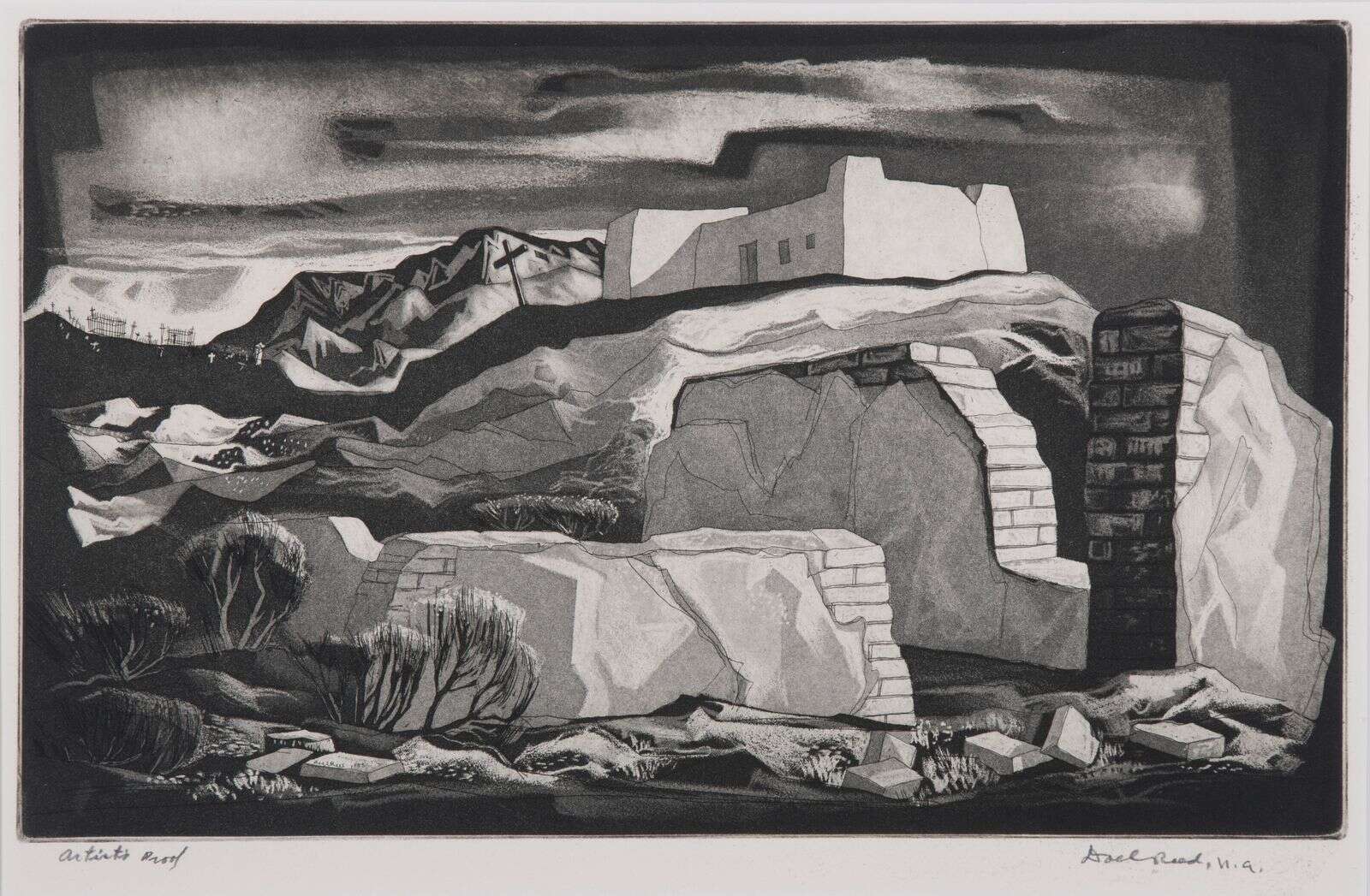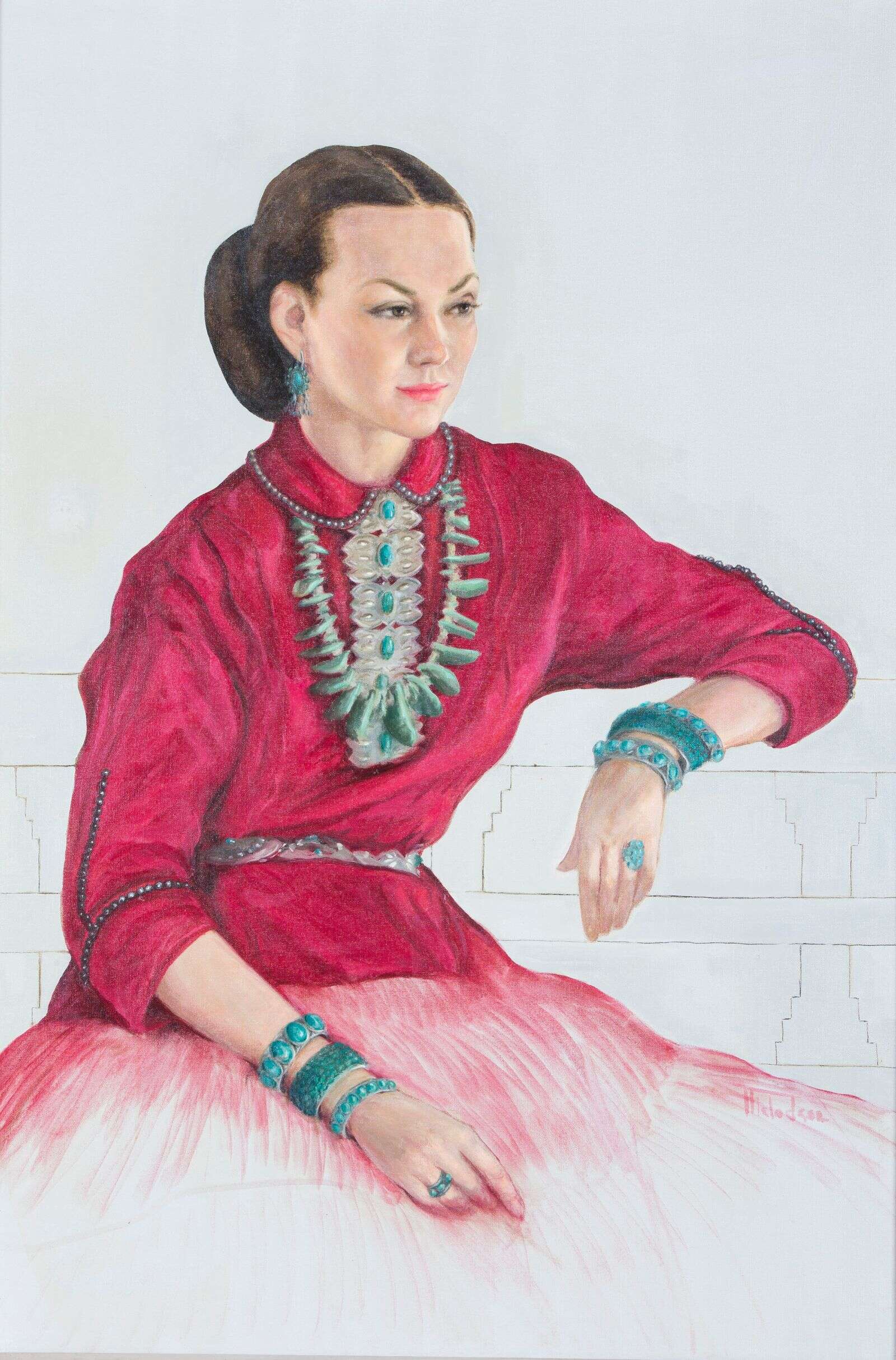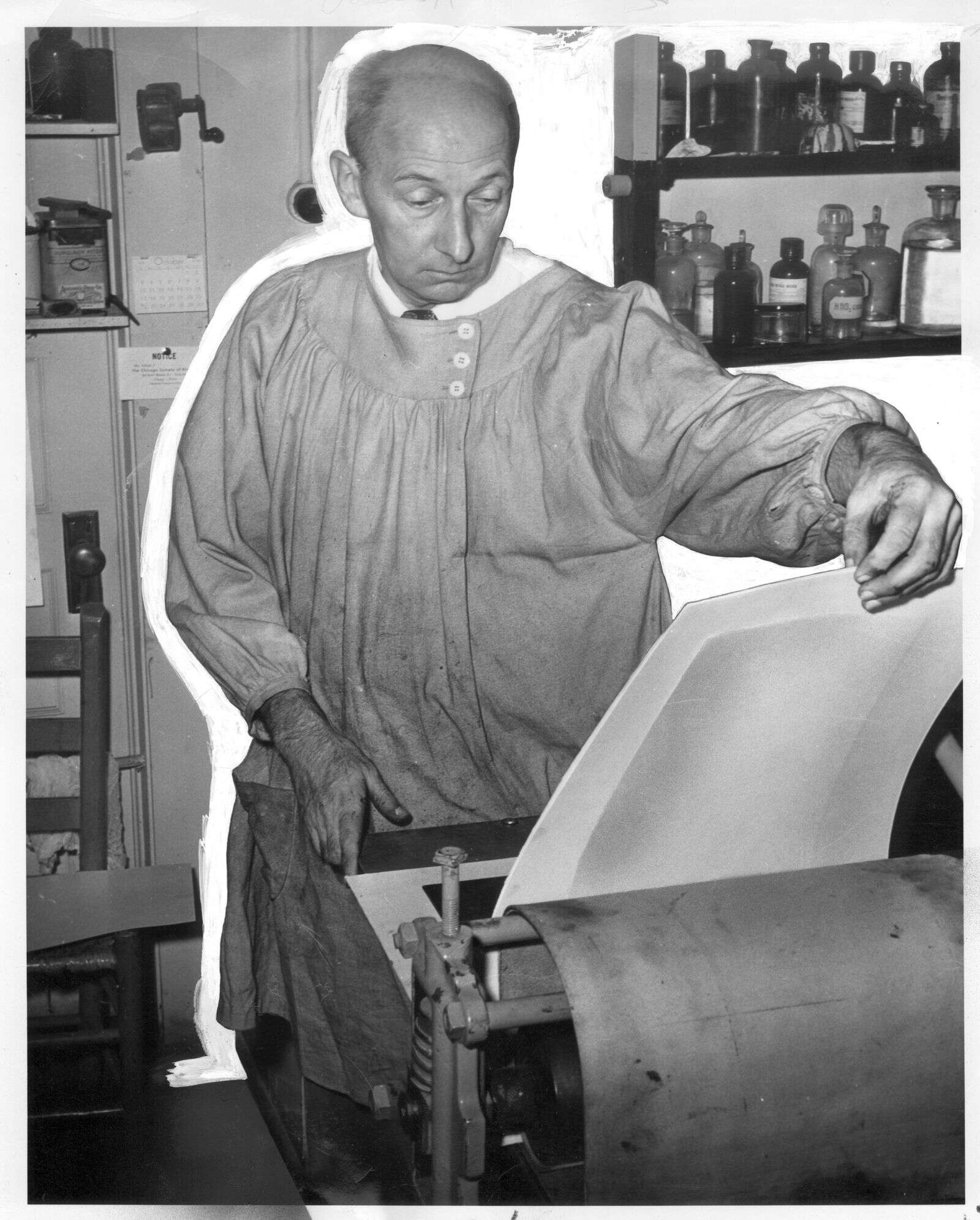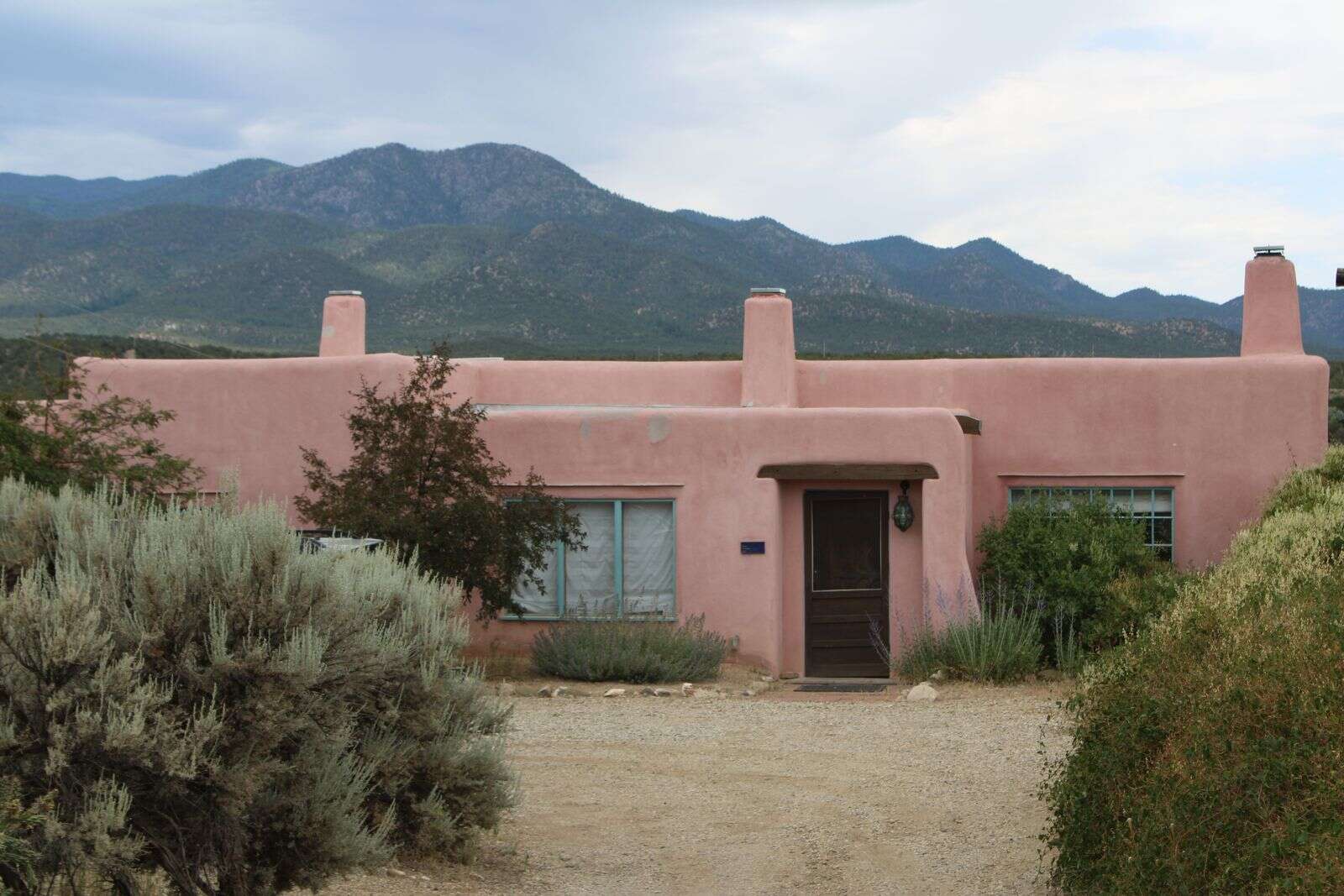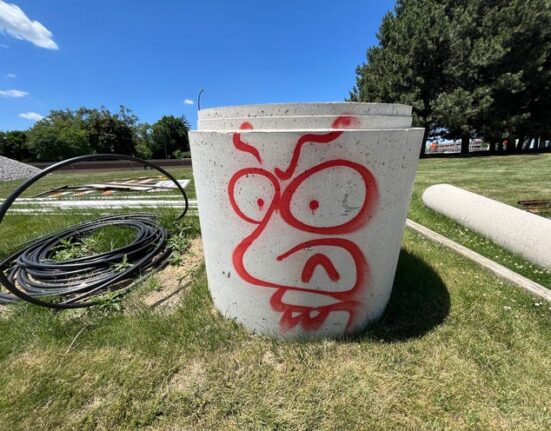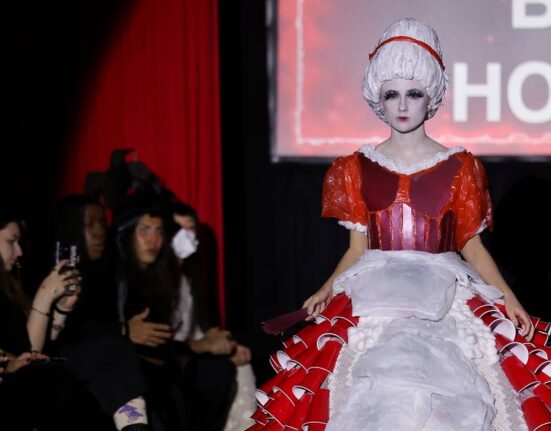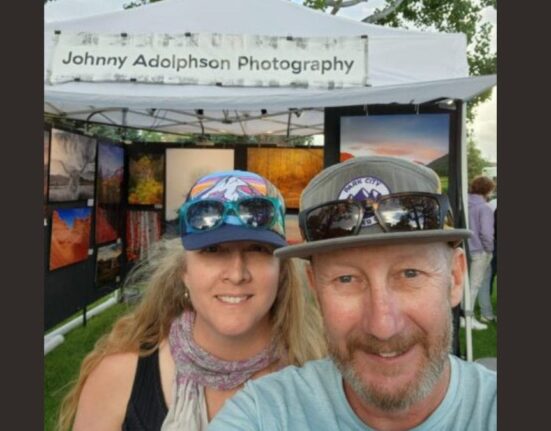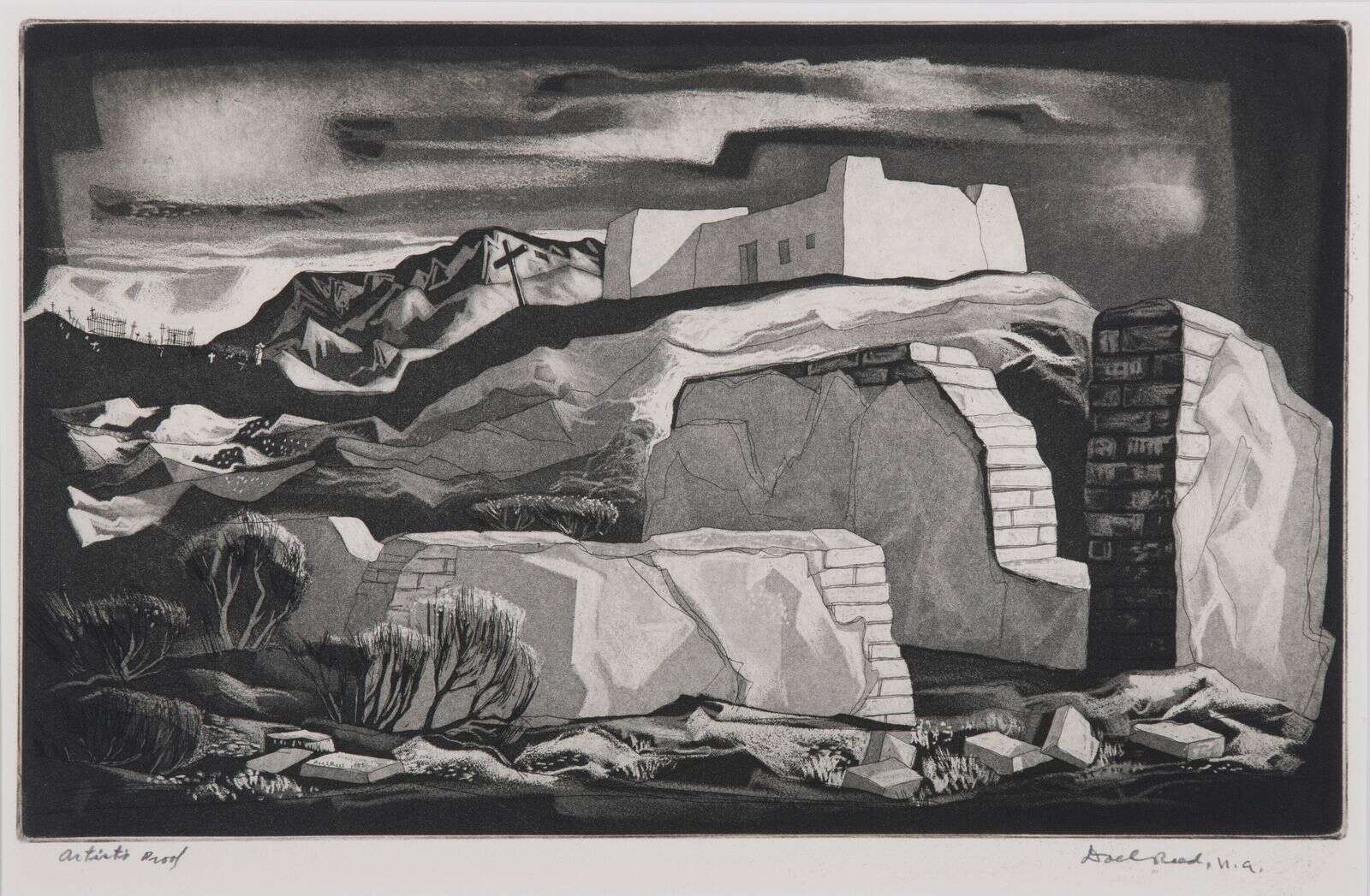
Doel Reed, Cordova, 1960, aquatint and etching on paper, 11 by 19 ½ inches. Oklahoma State University Museum of Art, Stillwater, Oklahoma (Used with permission)
Phil Shockley
A father-daughter artistic team from Oklahoma settled in Taos, New Mexico, on acreage that is now the Doel Reed Center. Oklahoma State University owns the center and OSU students, donors, and art aficionados have come to love the pale pink adobe homes and wooden ramada shade shelters on Artist’s Ridge.
Formally trained at the Art Academy of Cincinnati, Doel Reed excelled as a printmaker having survived a mustard gas assault in World War I that blinded him for several weeks and left him with permanent lung damage. In 1924 he took a faculty position in art at Oklahoma A&M College in Stillwater, an institution that would become Oklahoma State University. Reed taught drawing, painting, printmaking and art appreciation. His early work reflects 1930s American regionalism during the Depression Era, and he became a member of the exclusive group of Prairie Print Makers before becoming a full member of the National Academy of Design.
Beginning in the 1940s Reed made the summer trek from Stillwater to Taos, entranced by the Sangre de Cristo Mountains at sunrise and sunset and by the wealth of both Native American and Hispanic culture. Upon retirement, he moved to Taos in 1959 after having his work displayed in over 350 juried and international exhibitions including five shows in New York City. He won over 100 awards especially for his aquatints which are similar to a watercolor painting only produced as prints. At Talpa close to Taos and near a Penitente Morada and traditional Hispanic cemetery or campo santos, Reed bought an acre on a steep hillside with two run-down adobe houses and a goat shed that would become his printmaking studio.
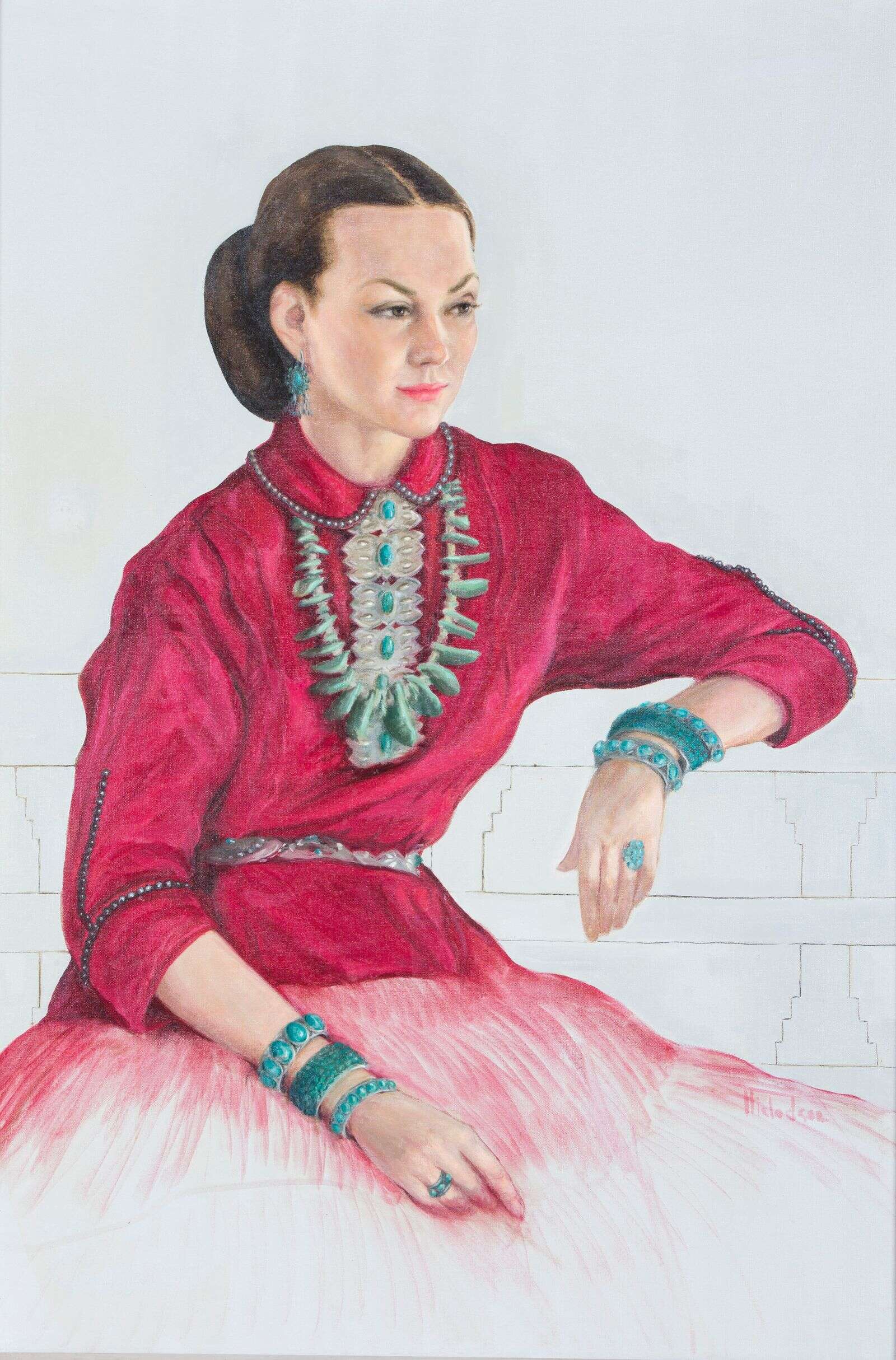
Portrait of Martha Reed, no date, oil on canvas, 41½ by 28 inches. Oklahoma State University Museum of Art, Stillwater, Oklahoma.(Used with permission)
Phil Shockley
“It is not my nature to copy nature as I find it,” Reed explained, “but rather to record facts and moods which excite the imagination and stimulate the creative process.” Mark Andrew White of the New Mexico Museum of Art in Santa Fe explains, “Painter and printmaker Doel Reed spent much of his later career depicting the landscape and distinctive adobe architecture of northern New Mexico.” White adds, “His paintings and aquatints of the crumbling adobes of small Hispanic villages offer intriguing insights into the changing landscape of northern New Mexico in the postwar – World War II period” with “time and loss” as “central thematic concerns for Reed throughout his career.”
Some of Reed’s prints both black and white and multicolored seem dark and moody and not effused with the golden sunshine of New Mexico. Scholars have argued that his artistic style might represent somber tones related to his temporary blindness on the killing fields of the Argonne Forest in France in World War I. But if Doel Reed’s art reflects nostalgia and abandoned Hispanic homes, his daughter Martha’s work vibrantly captured the upbeat mood of the colorful 1950s with its two-tone automobiles, refrigerators, and furniture fabrics of bright green, red, and purple.
Martha started her own business, Martha of Taos, and catered to wealthy women who purchased her broomstick skirts and hand-sewn velveteen blouses with sterling silver buttons to be worn with Navajo turquoise squash blossom necklaces, concho belts, bracelets, rings and earrings. Her shop stood next to the historic Taos Inn. Native women from Taos Pueblo were her seamstresses, and two of Martha’s skirts were worn at social events in the White House. She created and sold “an original Southwestern art tradition which has elevated American (clothing) design” praised a New Mexican architect. In the postwar years as Taos and Santa Fe artists sought to document a changing Hispanic heritage, tourism boomed across the Southwest with families arriving in air-conditioned cars eager to see Mesa Verde National Park, Taos Pueblo and the twisty, curvy streets of historic Santa Fe.
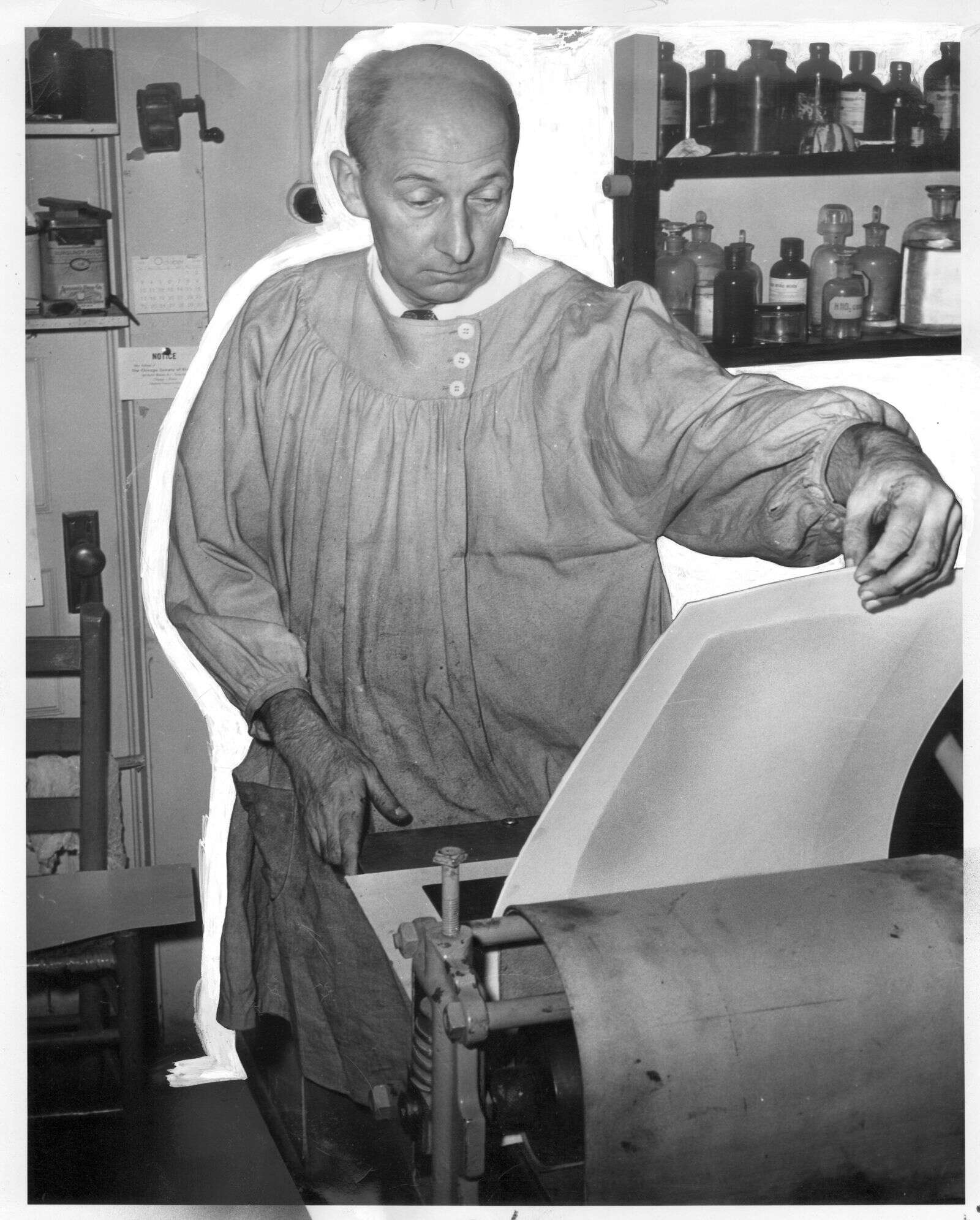
A photograph of Doel Reed in his print studio which was a former goat shed on the property he bought south of Taos on Artist Ridge. Photo from the Doel Reed Center, Oklahoma State University (Used with permission)
If the father Doel Reed was reflective and introspective, his outgoing daughter Martha loved to socialize. She became locally famous for her 5 p.m. “soirees with hooch” or happy hour drinking parties watching Southwestern sunsets from the portale of her house. Though she had several affairs, including one with writer Frank Waters, Martha did not marry because she claimed she could never find a man as good as her father.
As his daughter flirted and flourished, Reed himself turned more inward. “Religious symbolism and imagery became an important part of Doel Reed’s artistic output in the second half of his career,” notes Professor of Art History at OSU Rebecca Brienen. She adds, “Images of overt religious content do not form a majority of Reed’s works, but they include many of his most powerful and important representations of the New Mexico landscape.” Brienen edited Sun Patterns, Dark Canyon: The Paintings and Aquatints of Doel Reed (1894-1985) published by the Oklahoma State University Museum of Art.
Last summer I had the opportunity to tour the Doel Reed Center and to teach there as a visiting scholar. Of all the buildings on site, Reed’s print shop remains intact. Professor Brienen writes, “I still remember my initial encounter with Reed’s studio – it was a little dusty but nonetheless nearly untouched, with papers and Reed’s eyeglasses still laid out on his desk, as if the artist would soon return.” Jane Reed, Doel’s wife, had been a seamstress and her father a tailor. She passed on those gifts to Martha who managed her clothing business for 38 years with her fitted Pyrenees blouses, “shirts in jewel-like tones,” and Old Mexico style cotton dresses. With her business concerns and lively soirees, keeping up adobe houses and maintaining her father’s estate was not a priority.
After Doel Reed passed away, the original adobe homes suffered benign neglect. When Martha proposed to OSU that she would give them the property as part of a life estate, at first university administrators did not know if they could own and manage out of state property. But faculty, staff, and donors rose to the occasion including financial support of Martha, impoverished in her later years, and care for her 27 cats.
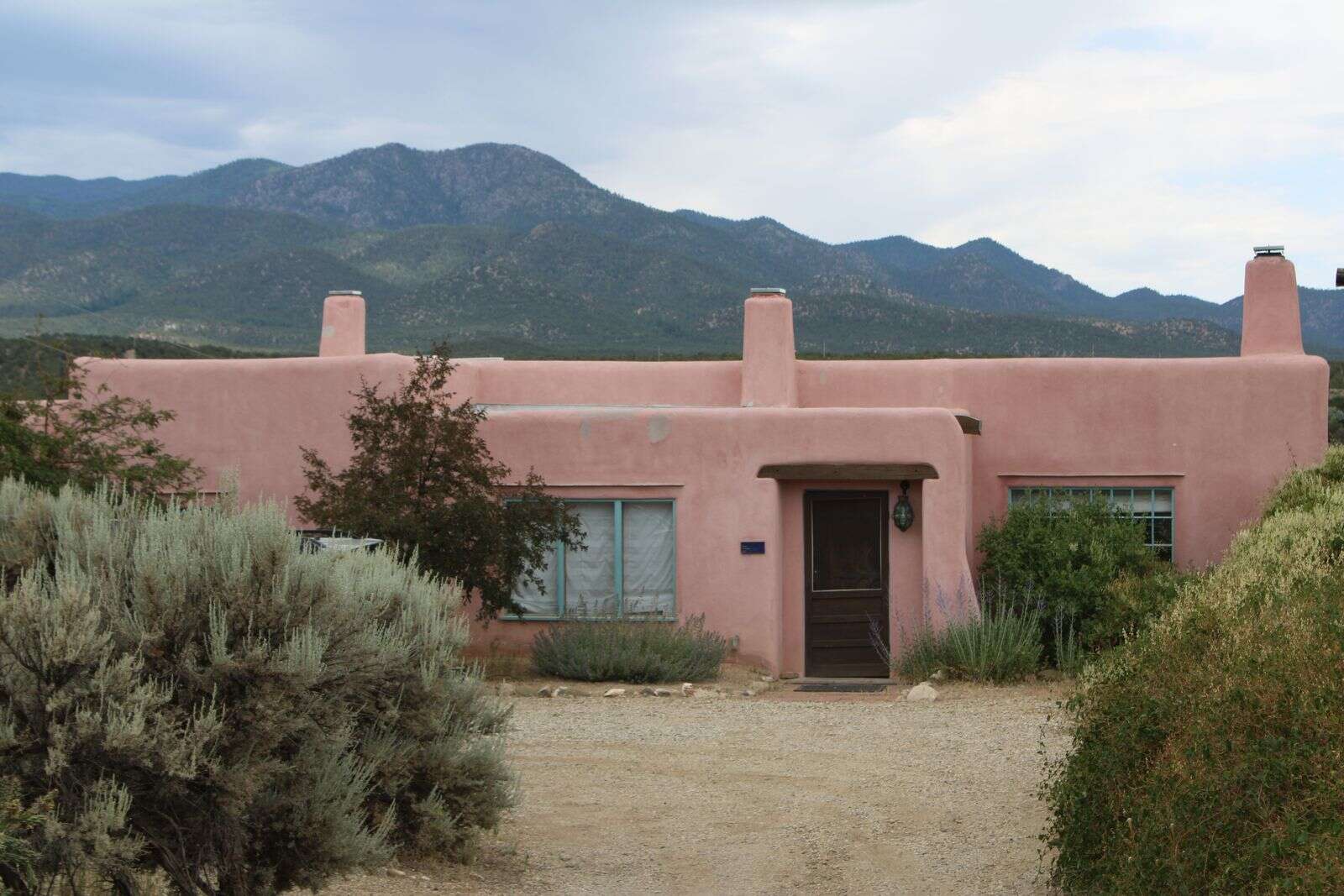
One of two fully restored adobe houses at Oklahoma State University’s Doel Reed Center near Taos, New Mexico. Careful restoration of the homes included cleaning up after Martha Reed’s 27 cats. (Author photo)
There was much to do – stabilize the property, see to Martha’s health, and begin major fundraising efforts. Now the Doel Reed Center is an unparalleled success for OSU with students arriving from mid-May through July. Leisure Learning classes are held in July and September.
Doel Reed believed, “The feeling of endless space on the Great Plains, the high mountains, the unlimited sky and clouds have been a great source of inspiration for the development of my own style, which might not have materialized elsewhere.” Oklahoma students come to the Doel Reed Center to experience that same expansiveness.
“There’s a kind of magical feeling, a creative nature, and it transforms Oklahoma students because of the incredible light, the beauty of the environment, and the quality of the air,” states Carol Moder, Ann & Burns Hargis Professor & Director of the Doel Reed Center. At their center in New Mexico OSU promotes experiential learning with small classes. Students develop close relationships with faculty and each other thanks to one-on-one interactions. “Friendships may last a lifetime,” Moder tells me, smiling. “You can’t bottle that!”
OSU faculty and students carry on two traditions – the sober landscape perspective of the artist Doel Reed – and Martha’s fun-filled chatty evenings with food, drink, and compañeros eager to travel, tell tales, and seek cultural experiences. Professor Moder laughs again and says, “Everybody in town had a Martha story.” I believe her. Now because of generous scholarships, OSU faculty and students in sociology, design, history, art, and English will have unique opportunities and in time will tell their own stories about the Southwest and the Land of Enchantment.
Andrew Gulliford is an award-winning author and editor and a professor of history at Fort Lewis College. He can be reached at gulliford_a@fortlewis.edu.

